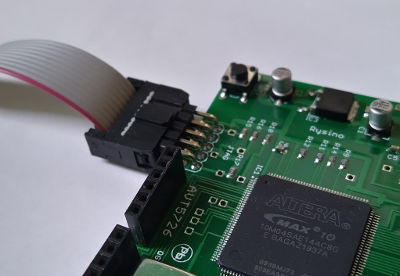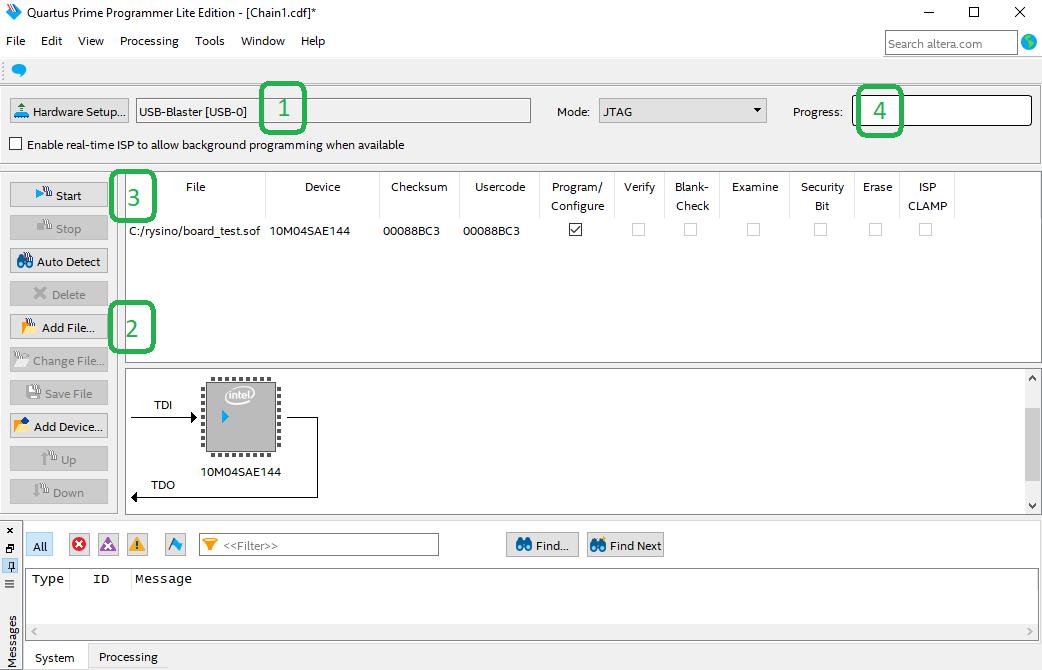Hardware requirements
- Rysino board
- USBmini cable
- USB Blaster JTAG programmer
Needed software
Quartus II is IDE provided by Intel for their FPGA chips. Before downloading we need to create free account. To do it visit Intel. Then download software from fpgasoftware.intel.com.You will need:
- Quartus Prime (includes Nios II EDS)
- MAX 10 FPGA device support
Nice to have is also:
- ModelSim-Intel FPGA Edition (includes Starter Edition)
For FT230 USB/UART converter additional driver is needed. It could be downloaded from www.ftdichip.com/Drivers/VCP.htm.
Configuring FPGA
Now connect USB Blaster to Rysino JTAG connector. Connection edging should be located on top as shown at Fig. 1. Then connect Rysino and USB Blaster to USB ports in your computer.

Next step is program board with testing project: board_test.sof. Open Programmer (Quartus Prime 18.1). Its window is shown at Fig. 2.

In (1) should be information about detected USB Blaster programmer.
Click Add file button (2) and load board_test.sof.
Click Start button (3).
Progress will be shown in (4). After a few seconds it should be "100% (Successful)" (Fig. 3).

Also this short movie could be helpful for you:
Test program
After programming you could start playing with board:
- LED1-4 show numbers from 0 to 15 in binary mode.
- LED5-8 are controlled by switches.
- UART is working in "echo" mode.